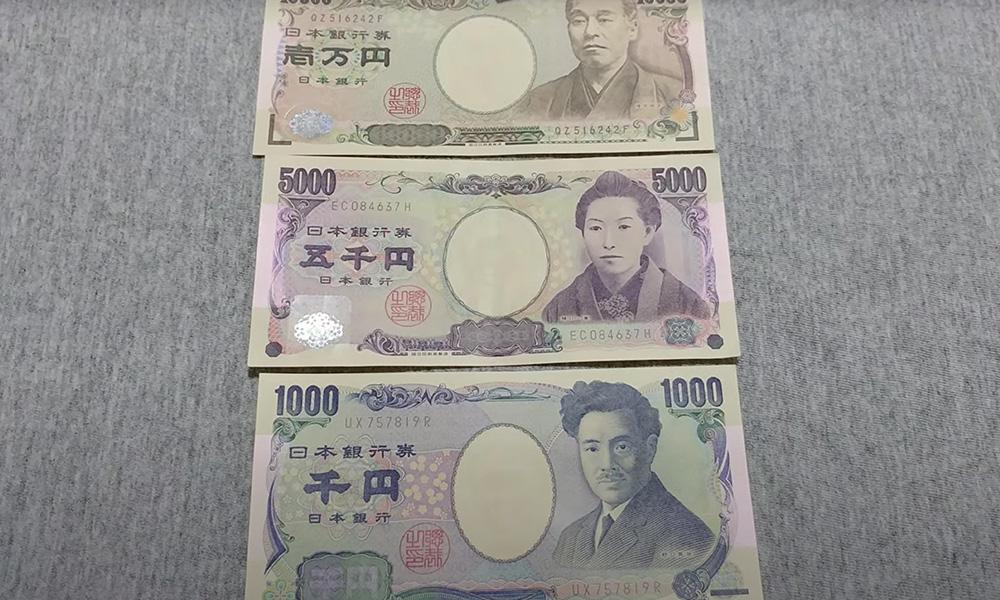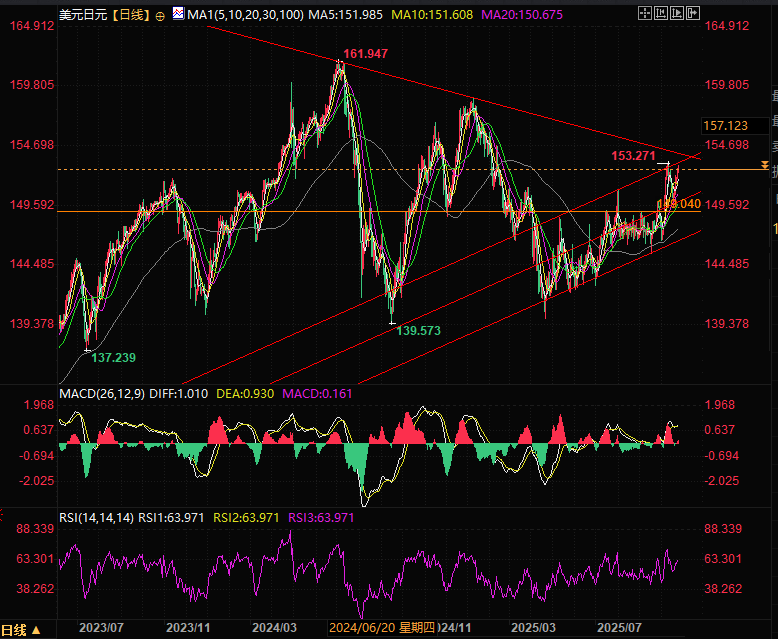A dangerous gamble: While everyone is shorting the yen, a reversal is brewing.
2025-10-24 16:00:42

Since Sanae Takaichi came to power, she has been heralded as the successor to Abenomics, leading the market to bet on a devaluation of the yen. But is this truly the case? While Sanae Takaichi previously voiced opposition to central bank interest rate hikes, she has clearly distanced herself from dovish sentiment since the election campaign began. Therefore, continuing to bet on a significant devaluation of the yen would be a misunderstanding of Takaichi's leadership.
Sanae Takaichi's main policy may have been misinterpreted
The Kaohsiung City team stated on Friday that it adheres to the principle of "economic priority, fiscal policy second" as the core foundation of its policy approach. It will strategically deploy fiscal spending within the framework of a "responsible and proactive fiscal policy." To ensure fiscal sustainability, it will strengthen market confidence by reducing the debt-to-GDP ratio.
The market generally believes that this represents loose monetary policy + fiscal policy, as well as expansionary government intervention, but in reality its principles may point to valuing the balance between fiscal stimulus and debt sustainability, the balance between energy transition costs and long-term benefits, and the balance between strengthening and deepening communication with allies and the transfer of economic sovereignty.
If energy independence and structural reforms are implemented as planned, Japan's economic fundamentals will improve. If these reforms achieve breakthroughs, the exchange rate will gradually stabilize. Meanwhile, the continued depreciation of the yen increases the competitiveness of its exports, curbs imports, and contributes to a trade surplus. This suggests a lack of fundamental support for the yen's continued depreciation.
The essential difference between Takashi Economics and Abenomics: The room for yen depreciation is limited
In a seemingly unlikely turn of events, Japanese domestic bond yields have surpassed US stock dividend yields for the first time in 20 years. This isn't a typo—it's a silent earthquake in global capital flows. The 10-year Japanese government bond yield is now higher than the S&P 500 dividend yield, a shift that has completely upended the incentive structure that has governed Japanese portfolio allocation since the days of Junichiro Koizumi's administration.
The massive flow of Japanese savings into higher-yielding US assets – a move that fueled the carry trade and financed global risk exposure – is suddenly looking outdated. A long-dormant wave of capital repatriation is now quietly emerging.
The market is still trying to decipher the core of "Takaichinomics", but the current situation is completely different from that in 2012.
When Shinzo Abe returned to power, his key strategy for boosting economic growth was to deliberately devalue the yen—a monetary cannon aimed at the deflationary bastions. This time, however, the situation has completely reversed. The yen is already deeply weakened, with the real exchange rate reaching multi-decade lows. Further significant devaluation would inevitably trigger geopolitical backlash, leaving little room for maneuver.
The Bank of Japan's policy is accommodative but contains a hidden threat
The Bank of Japan is no longer just one of the world's major doves—it's the last of them. The argument that "Sanae Takaichi's arrival in power will inevitably lead to further easing in Japan" is clearly premature at this point.
Although Sanae Takaichi's political stance is hawkish and her speech style is conservative, the institutional pace of the Bank of Japan is still dominated by Kazuo Ueda, and the Bank of Japan's sensitivity to its own credibility continues to rise.
For this reason, the Bank of Japan's next meeting poses a risk trap for the "market consensus." Previously, the market briefly priced in the expectation of a rate hike, but after Sanae Takamichi took office, this expectation has clearly declined.
However, the overnight index swap (OIS) curve sends a different signal: the core contradiction lies in "timing" rather than "trend direction".
If the Bank of Japan sends even a mildly hawkish signal, as it did last July, it could trigger sharp fluctuations in the exchange rate between Japanese government bonds and the yen. Traders betting on a one-way depreciation of the yen may find that their "foundation" is not solid rock, but fragile shale.
Traditional trading logic is loosening: the negative correlation between the Tokyo stock market and the yen exchange rate is weakening
In the global macroeconomic landscape, the negative correlation between the Tokyo stock market and the yen exchange rate, once one of the most robust, is now beginning to fray. The traditional logic of "weak yen = strong stock market" fails to reflect the profound changes in the Japanese corporate landscape, where production is now globally distributed and fully hedged against exchange rate risk.
"Japanese companies" are no longer just a group of exporters; they are now a diverse matrix of multinational corporations that assemble, sell, and generate revenue overseas. The window for reaping "easy alpha" from a weaker yen has completely closed, leaving only the arduous and tedious task of reform—the very task that Shinzo Abe began but failed to complete.
And this is where the real investment opportunity lies. Japan boasts more listed companies than any other major global market, yet many suffer from bloated organizations, weak profits, and inefficiencies. If regulators and corporate boards can finally break down the cultural constraints on mergers and acquisitions, divestitures, and private equity partnerships, the potential for corporate consolidation will be enormous. Sanae Takaichi has clearly pointed out that overcapacity is dragging down the operational efficiency of Japanese companies.
If she and the Financial Services Agency (FSA) can push for the next phase of corporate governance reforms, it could trigger a market reassessment of Japan's "value trap" sectors. Currently, the MSCI Japan Value Index's price-to-earnings ratio is only half that of its US counterpart, a significant valuation gap.
The current reform is no longer a "macro shock therapy" but a "micro surgery" that requires precision.
The core positioning of Gaoshi Economics: From short-term stimulus to long-term corporate governance and rectification
”If "high market economics" can really take shape, its core will not be another exchange rate speculation or debt expansion, but a nationwide corporate "governance and rectification."
The fate of the Japanese yen may no longer be tied to the "global liquidity" narrative, but may soon shift to the "global repo" narrative. For forex traders, this means the next major trading opportunity in the Japanese market may not be shorting the yen, but rather following the "repatriation" of funds.
Trading reminder:
The key to timing a long yen position isn't courage, but endurance—how long can you hold out under the pressure of negative holding costs before the market finally turns? We've experienced similar situations before: despite solid structural support and favorable yields, the yen remains constrained by its "patience cost," hindering its rebound. Such trades often fail not due to logical flaws but rather due to premature entry.
Market expectations for the next interest rate hike have been pushed back to December at the earliest, with most even suggesting a delay until early next year. This expectation, in turn, could suppress the yen's upside potential. However, caution and uncertainty in financial markets may boost safe-haven currencies like the yen and suppress cross-currency pairs (e.g., yen against other currencies).
Technical Analysis:
As can be seen from the daily chart, USD/JPY is currently constrained by the upper track of the rising trend line and the falling pressure line, namely the pressure range of 153.20-153.70 near 153.70.
The first support is around 152.00, which is the point where the 5-day line and the recent exchange rate broke through. Then it is around 150.70, which is the high point on August 1. Finally, 149 is the starting point of this wave of yen depreciation and the lowest point of the exchange rate on the day when Sanae Takaichi won the party leader.

(USD/JPY daily chart, source: Yihuitong)
At 15:57 Beijing time, the USD/JPY exchange rate was 152.85/86.
- Risk Warning and Disclaimer
- The market involves risk, and trading may not be suitable for all investors. This article is for reference only and does not constitute personal investment advice, nor does it take into account certain users’ specific investment objectives, financial situation, or other needs. Any investment decisions made based on this information are at your own risk.





















